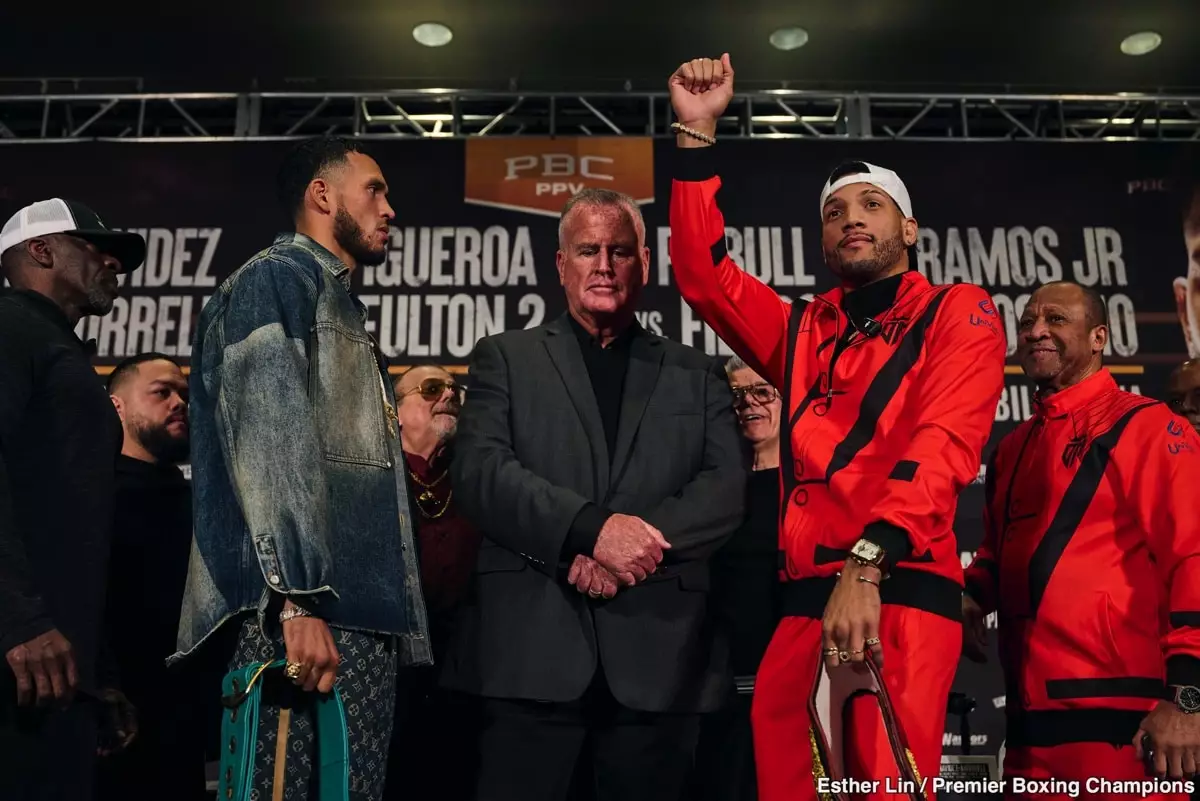As the boxing world turns its gaze to Las Vegas, excitement brews over the much-anticipated clash between David Benavidez and David Morrell at the T-Mobile Arena. This event not only stands out for its main event fighters but also for the contrasting styles and circumstances surrounding them. Benavidez, the undefeated fighter with an unblemished record, is known for his relentless combination punching and high output. On the other side, Morrell, the WBA ‘regular’ light heavyweight champion, brings a unique skill set that includes powerful counter-punching and agility.
The deck is stacked with drama; with Benavidez (29-0, 24 KOs) looking to embody his role as the volume puncher, Morrell (11-0, 9 KOs) must rise to the occasion as both a defender and a striker. Commentator Al Bernstein emphasizes that it is imperative for Morrell to become a “perfect counter-puncher” to mitigate Benavidez’s offensive onslaught. The high stakes nature of this bout begs the question: how will the younger, less experienced Morrell handle the pressure?
Benavidez’s approach has always been marked by aggression and a barrage of punches that often overwhelms his opponents. Bernstein’s commentary suggests that while Morrell may possess significant skill and power, the challenge lies in overcoming Benavidez’s constant volume. He highlights a key feature of Benavidez’s strategy—the tendency to wear down fighters over the course of a match, possibly waiting until the midpoint to start firing on all cylinders. However, Bernstein notes that Morrell’s agility and movement might make it difficult for Benavidez to lock onto him as consistently as with his previous opponents.
Morrell represents a different breed of fighter; he is not only younger at 27 but also possesses the benefit of Cuban boxing heritage, which places great emphasis on footwork, finesse, and tactical versatility. This dynamic suggests that Morrell could maintain an elusive presence, potentially frustrating Benavidez’s attempts to apply his classical volume-punching strategy. Bernstein’s recognition of Morrell’s skill set points to the likelihood of an unpredictable fight where either fighter can turn the tide unexpectedly.
The Unseen Challenge: Morrell’s Power
Another intriguing angle of this fight lies in Morrell’s remarkable ability to deliver decisive power shots. Bernstein recalls Morrell’s past encounters, such as those with Kalvin Henderson and Sena Agbeka, where he successfully countered opponents throwing combinations with well-timed, powerful punches. The commentary raises a vital point—Benavidez has not yet faced a fighter of Morrell’s caliber who can effectively sit down on his punches. This undeveloped facet of Benavidez’s resume sets the stage for an exciting uncertainty.
In a sport that thrives on the unexpected, Morrell’s punches may carry the shocking potency needed to alter the fight’s trajectory. Bernstein points out that while Gvozdyk was a recent challenger for Benavidez, he failed to deliver significant power until the later rounds. Thus, Morrell’s ability to land his big shots early in the match could disrupt the expected rhythm of Benavidez’s offensive strategy.
Bernstein also touches on the tactical decisions Morrell may face throughout the bout. While he possesses the ability to box effectively, there’s also the risk of being drawn into a slugfest with Benavidez, which could seek to exploit Morrell’s relative inexperience. Bernstein’s view that Morrell must find an equilibrium between boxing and aggression is crucial; he must learn to engage without overcommitting. The fine line between strategy and instinct will be pivotal in determining the fight’s outcome.
Ultimately, the Benavidez vs. Morrell fight is shaping up to be a compelling study in risk and reward. As both fighters prepare for battle, the boxing universe watches, eager to see if Morrell can indeed silence the volume puncher or if Benavidez will continue his campaign of dominance in the ring. With so much at stake, fight night promises high drama and a showcase of some of the sport’s finest talents.

